Last Chance to Catch NYC's Holiday Notalgia Train
We met the voices of the NYC subway on our nostalgia ride this weekend!


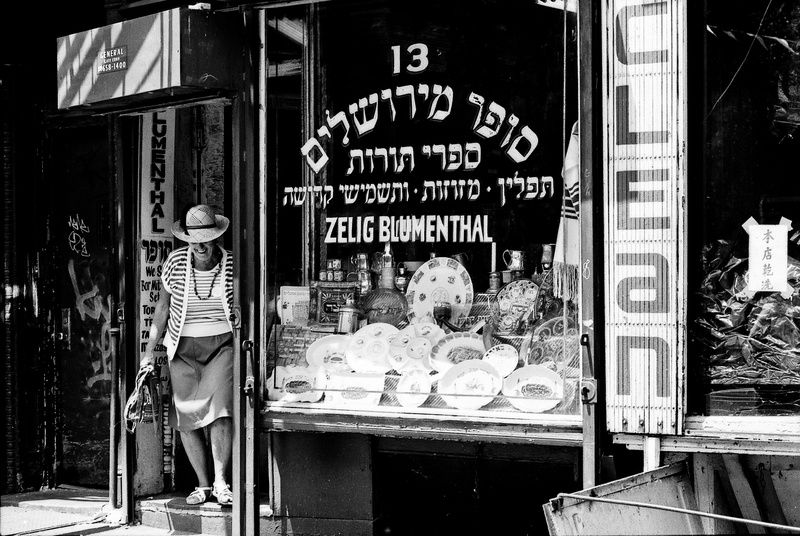
Photo by Jeff Rothstein
For better or worse, New York City in 2019 is almost unrecognizable when compared to the New York of only a few decades ago. Fortunately, we have the work of many photographers who have captured the changing city over time. The latest collection we’ve come across is by photographer Jeff Rothstein, a native of Brooklyn who has lived in Manhattan’s West Village for over thirty years, and has been photographing New York City since the 1970s. He shoots on a 35mm black and white film camera and considers himself an “urban observer.”
From Times Square to Queens, the city has developed in new and exciting ways which Jeff Rothstein’s new book, Today’s Special: New York City Images 1969-2006, honors with a collection of five decades worth of historic New York locations that have disappeared. Among the forty-eight images in the collection are snapshots of Times Square, the old Jewish Lower East Side, and many forgotten businesses throughout the city. Although long gone, Rothstein’s photographs draw the viewer back into the wonders of late 20th century New York by capturing the iconic fashions and businesses which make New York what it is, today.
Here are ten snapshots from Rothstein’s book which showcase a seemingly vanished New York:
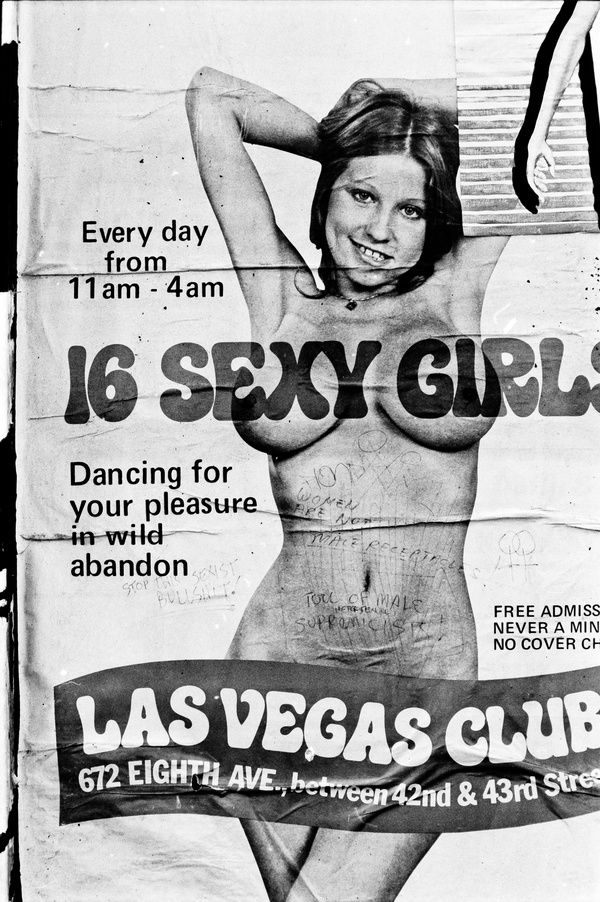
Photo by Jeff Rothstein
Before the invasion of commercial retailers to the midtown area, Times Square was riddled with peep shows, prostitution, gambling and—believe it or not—was the place in Manhattan with the most felony and net crime complaints in the 1970s. This corrupt neighborhood was almost unrecognizable from the television spectacle of modern day Times Square, with Rolling Stone magazine declaring West 42nd Street the “sleaziest block in America” in 1981. The City of New York even created a “Vice Map” in 1973 which located all the businesses considered undesirable.
This picture taken by Rothstein in 1978 captures one of many posters for Times Square’s strip clubs and peep shows. Posters such as this were common throughout the Times Square neighborhood and the businesses which posted them were constantly busy with male customers. The area remained stimulated with the sex industry until the 1990s movement pushed by Mayor Rudolph Giuliani to revamp 42nd Street into the tourism powerhouse which it is, today but elements of seedy Times Square still exist if you know where to look. You can join our upcoming tour this weekend of the Remnants of Gritty Times Square to discover them!
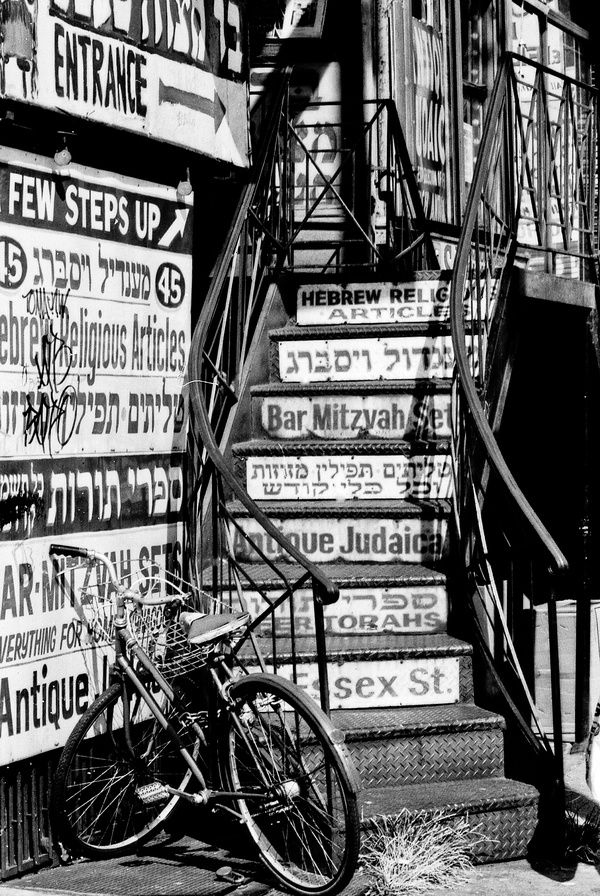
Photo by Jeff Rothstein
The Lower East Side of Manhattan was once inhabited by a large population of Jewish immigrants, whose businesses catered to the needs of New York’s Jewish community. The neighborhood remained a predominately Jewish community until the late 1990s when business owners were often driven out by larger businesses and rapid redevelopment took place, building larger-scale hotels and residential condos on demolished lots.
“I used to go down there to shoot photos and then eat matzo brie at a small place on Essex Street,” said Rothstein. “All these stores are memories now, driven out by gentrification and high rents.” Today, the New York Jewish community has worked to preserve many of the buildings and businesses of the Jewish Lower East Side so you can still get the feel of what the neighborhood once was in some places.

Photo by Jeff Rothstein
With the introduction of the new contactless payment system, the MTA has had several major changes in the past few decades. However, before all of the new technological advancements, the subway was accessed via the purchase of subway tokens, instead of MetroCards. Since their discontinuation in 2003, tokens have become artifacts of New York’s history and their value has significantly increased from their original five cents.
In this photograph by Rothstein, a man is dressed in a subway token costume in 1983 for a MTA promotional event. Since the introduction of the MetroCard, these tokens has vanished—and soon, the same may be said for the MetroCard.

Photo by Jeff Rothstein
Before Citi Field was the home of the New York Mets Baseball team, Shea Stadium stood in its place as the home of Mr. and Mrs. Met. In particular, the year 1969 is the year the Mets won the World Series and transformed their team from “New York’s Lovable Losers” to “The Miracle Mets.” Although Shea Stadium no longer stands, its location continues to be the home of the Mets and its fans.
In this snapshot captured by Rothstein, several New Yorkers can be seen cheering as the Mets finally brought home a World Series title. This unexpected win made history as the first World Series championship for the team—a victory which was only repeated again in 1986.

Photo by Jeff Rothstein
From 1968 to 1971, there were two iconic venues for rock music in America: Bill Graham’s Filmore West in San Francisco and Filmore East on Second Avenue and East 6th Street in New York. These two venues were the epicenter of the up-and-coming rock stars of the late 1960s and early 70s. Before closing its doors shortly after this picture was taken in 1971, the marquee served as a roadmap for the “who’s who” in rock music at the time.
This picture, captured by Rothstein, captures the concert venue at its height in 1971. In the back right of the picture, you may be able to spot the Orpheum Theater, which still stands today. Also in this picture is the vibrancy and livelihood of New York’s East Village during the early 1970s.
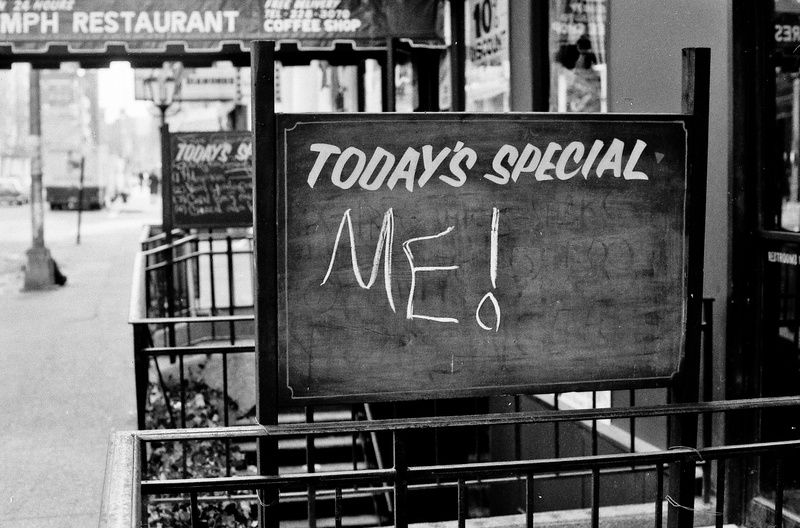
Photo by Jeff Rothstein
The West Village of the 1970s included many delicious restaurants and trendy bars, with a low-key vibe not as readily available in the polished neighborhood it is today. In this photo, taken by Rothstein on Bleecker Street in 1979, restaurant owners served more than just food, but also comedy. Among the many comedy clubs, these West Village restaurants were often smaller, family-owned businesses which offered “some great places to eat and drink,” according to Rothstein. This particular photograph is the inspiration for the title of Rothstein’s book, Today’s Special: New York City Images 1969-2006, and showcases disappearing individuality and comedy that categorized New York neighborhoods at this time.
Neighboring the location of this picture several classic New York restaurants: O’Henry’s Steak House, which featured real old-school with sawdust on the floor; La Groceria, a grocery store that sold affordable Italian food; and The English Pub, where Rothstein used to drink Watney’s Ale. Many of the businesses which surrounded this location still are operating today, with many others converted into new restaurants, stores, and apartments.

Photo by Jeff Rothstein
Amidst the meatpacking business’ downturn in New York, this shot captured by Rothstein in 1988 shows the Meatpacking District before the Whitney Museum of Art and the many high-end boutiques began invading the neighborhood. Beginning in the 1960s, many meatpacking businesses began to change as a result of the new supermarket culture which characterized the mid-sixties. As a result, in the 1970s, many of these abandoned meatpacking buildings became gay bars and nightclubs, changing the atmosphere of the neighborhood entirely. In the late 1990s, many of these clubs moved and high-end shopping boutiques opened up, thereby changing the atmosphere of the Meatpacking District again.
“I used to wander there with my camera early weekend mornings and the area was really deserted,” noted Rothstein. “Usually just me and the transvestite hookers who hung out there.” Additionally in this photograph, you can see the High Line in its original state not being used. Although transformed into new tourist destinations, many of the buildings which held meatpacking businesses are still standing, today.

Photo by Jeff Rothstein. This image is not in Rothstein’s book.
The Fulton Fish Market, previously located in Downtown Manhattan’s South Street Seaport, was home to the world’s second largest fish market in the world—second only to Tokyo’s Tsukiji Fish Market. The market was allegedly owned and operated by the New York mafia until 2001, when the City of New York’s Business Integrity Commission took control of the site to fight organized crime in the city. The rich history of the market dates back to 1822 and still continues today in their new location in Hunts Point in the Bronx, which became the new Fulton Fish Market in late 2005.
At the time of this photo in the 1980s, the fish market was still going very strong in downtown. Although the businesses may have left, much of the original buildings still remain in their iconic styles. Though now behind construction barriers, the old Fulton Fish Market can still be seen from under the FDR Drive.
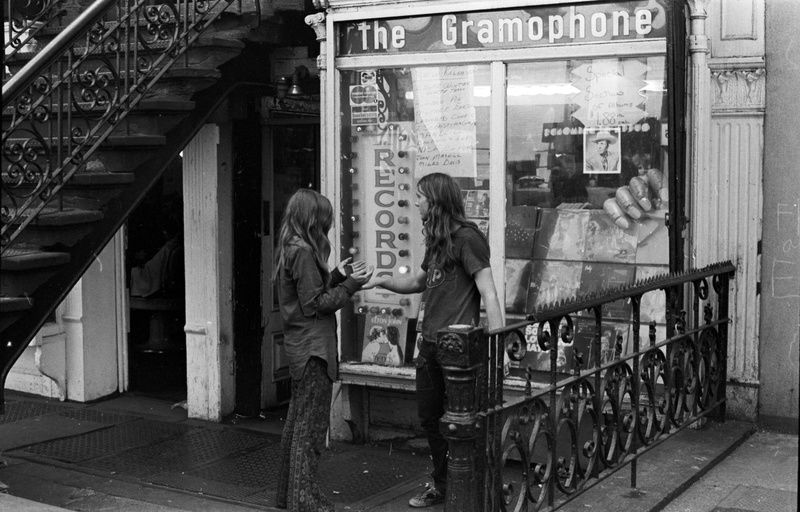
Photo by Jeff RothsteinThis image is not in Rothstein’s book.
Before Apple Music and Spotify, record stores such as this one were “almost as ubiquitous as nail spas are now,” said Rothstein. Some of the most popular included chains such as Sam Goody’s, Record Hunter, and King Karol. “One of my favorites was Discophile on West Eighth Street, which was the place to go for import albums,” said Rothstein, adding, “They always sounded better than American pressings.”
This smaller record store, Gramaphone, at St. Mark’s Place in 1971 shows the new-aged popularity of many downtown record stores. Many of these record stores have since closed, but their stores now host smaller boutiques and stores throughout downtown Manhattan.
 Photo by Jeff Rothstein
Photo by Jeff Rothstein
In the final years of the hippie movement in America, New York became one of the last places of radical protest and social deviance for hippies. This picture, captured in 1971 at the second Earth Day celebration held in Central Park near Bethesda Fountain, shows a young woman digging dirt amongst her fellow Earth Day celebrators. “These were the waning days of hippiedom and the weekends were jammed with freaks,” said Rothstein, adding, “and I use that term with all due respect, as I considered myself one of them—well, in appearance, anyway.”
Although many of these people and places no longer exist in New York, their legacy and spirit still lives on into the future. As New York’s neighborhoods and businesses continue to evolve, New Yorkers and tourists alike continue to change the atmosphere of the city in new and different ways. For more information on Jeff Rothstein’s work, visit his website here. Additionally, his book Today’s Special: New York City Images 1969-2006 is available for purchase at the Strand Bookstore and his website.
Next check out New Book Documents The Rise and Tragic Fall of NYC’s Original Penn Station and The Cat Men of Gotham is a New Book of Unbelievably True Feline Tales in Old NYC
Subscribe to our newsletter